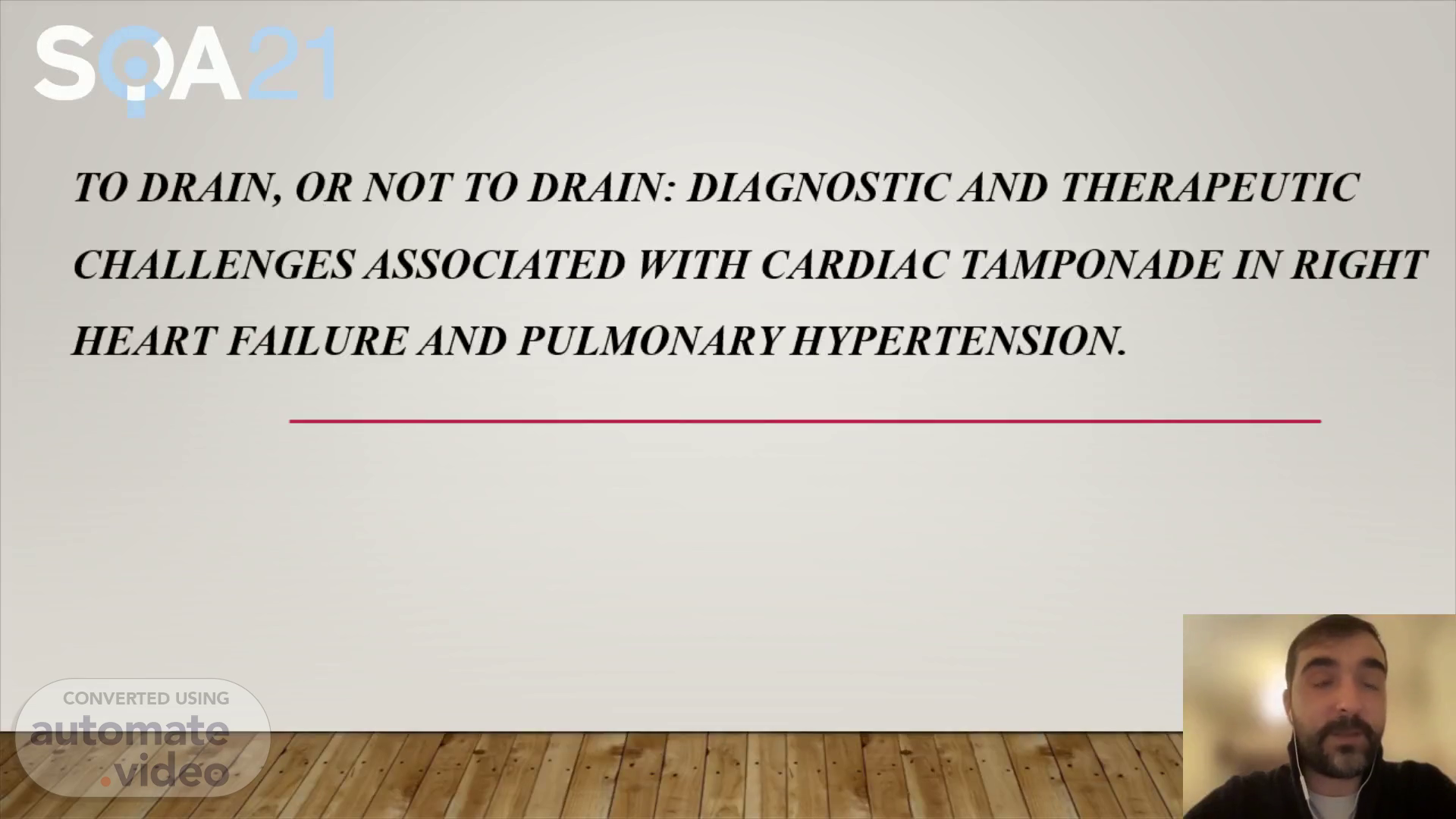
To drain, or not to drain: diagnostic and therapeutic challenges associated with cardiac tamponade in Right heart failure and pulmonary hypertension.
Scene 1 (0s)
To drain, or not to drain: diagnostic and therapeutic challenges associated with cardiac tamponade in Right heart failure and pulmonary hypertension..
Scene 2 (23s)
No conflict of interest Acknowledgements - Dr Richard Fisher (ITU Consultant – Kings College Hospital, Foundation Trust) - Miss Tania Carvalho (Echocardiographer – Kings College Hospital, Foundation Trust).
Scene 3 (41s)
CASE presentation. 44 years, Female PMHX: ILD, PAH, RVF, Anti-synthetase syndrome Previous ITU admission - COVID pneumonitis, discharged on home oxygen Admitted after boarding a flight without oxygen - generally unwell, tachycardia, lethargy, dyspnea.
Scene 4 (1m 6s)
CASE presentation. Diuretics and corticosteroids due to exacerbation of interstitial lung disease, RVF and moderate pericardial effusion; Good clinical improvement..
Scene 5 (1m 44s)
PLAX-quicktime.mov. Echocardiogram.
Scene 6 (2m 8s)
PSAX-quicktime.mov. Echocardiogram.
Scene 7 (2m 24s)
A4Ch-quicktime.mov. Echocardiogram.
Scene 8 (2m 59s)
CASE presentation. Cardiology review Transferred to ITU - invasive hemodynamic monitoring and conservative management (inotropes, diuretics and inhaled pulmonary artery vasodilators) Pericardial effusion not drained.
Scene 9 (3m 18s)
abstract. Poor Outcomes Associated with Drainage of Pericardial Effusions in Patients with Pulmonary Arterial Hypertension Authors: Anna R. Hemnes , MD, Sean P. Gaine , MD, PhD, Charles M. Wiener, MD.
Scene 10 (4m 9s)
No strict guidelines or formal consensus regarding this clinical presentation, Diagnosis of cardiac tamponade in PAH can be challenging Management tailored to individual cases Draining moderate pericardial effusions is associated with high mortality and complications Conservative management is advocated in the absence of cardiac tamponade Echocardiography - useful tool when used appropriately by experient users (identification of atypical features of cardiac tamponade, early management ).